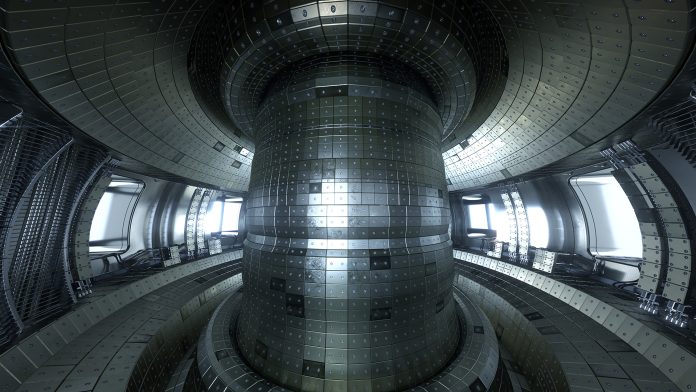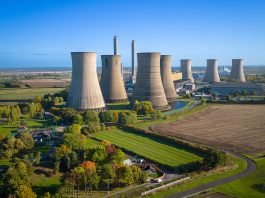The UK Atomic Energy Authority (UKAEA) has signed a multi-year deal with Centrum výzkumu Řež (CVŘ) to further the development of the UK fusion energy plant called STEP.
STEP – otherwise known as the Spherical Tokamak for Energy Production – aims to deliver a prototype fusion energy plant in the UK, targeting operations in 2040.
The fusion energy plant will be built at West Burton in Nottinghamshire and will prove the viability of fusion for transforming the UK’s energy supply, providing low-carbon, safe, and near-limitless power.
The UKAEA’s deal with CVŘ, the Czech Republic’s research organisation, marks a pivotal milestone in the plant’s development.
The use-of-facility agreement will allow the testing of High Temperature Superconducting (HTS) tapes, which are essential for developing the prototype fusion energy plant.
Marek Miklos, Business Development Manager from CVŘ, commented: “Working in partnership with the STEP team is a fantastic opportunity to support the UK’s world-leading programme to develop a prototype fusion energy plant.
“The Hi-CrIS testing rig will open lots of opportunities for further material studies for fusion applications.”
Fusion energy and superconductors
The UKAEA and CVŘ will partner to develop Hi-CrIS (High neutron fluence Cryogenic Irradiation of Superconductors), a pioneering test rig.
This collaboration aims to evaluate the impact of a neutron spectrum relevant to fusion energy on the superconducting properties of HTS tapes.
The STEP project plans to utilise HTS tapes to confine fusion plasma, a superheated gas of hydrogen isotopes, within a tokamak.
At temperatures exceeding 150 million degrees Celsius, the isotopes fuse into helium, generating energy in the form of neutrons.
Hi-CrIS rig development
Expected to become operational in 2026, the Hi-CrIS rig will provide crucial data for optimising the design and lifespan of STEP’s superconducting magnetic components.
These components are designed to withstand cryogenic temperatures (-253°C) and high-energy neutron flux.
HTS tape samples will undergo irradiation with high-energy neutrons using CVŘ’s LVR-15 light water tank-type research reactor.
Throughout transportation and measurement, the samples will be maintained at 20 Kelvin to simulate their operating environment accurately.
The collaboration between UKAEA and CVŘ signifies a significant advancement in fusion technology testing, laying the groundwork for future developments.
To learn more about the STEP project, read our article from Paul Methven, CEO of UKIFS, a subsidiary of UKAEA.









